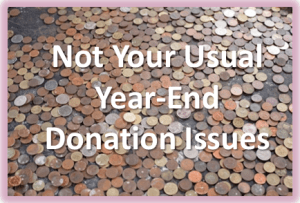Why Smart Nonprofits Focus on Growing Monthly Giving
 For at least the past seven years I’ve been actively encouraging nonprofits of all stripes to prioritize beginning or ramping up their monthly giving program.
For at least the past seven years I’ve been actively encouraging nonprofits of all stripes to prioritize beginning or ramping up their monthly giving program.
Not a lot of nonprofits were really leaning into this then. But, as much sense as it made then, it makes even more sense now.
So, I’m going to ask you: How are you doing with this?
Here’s why I’m asking.
If there’s anything the pandemic years have taught us,not to mention recent climate-related disasters, you need a dependable source of income in order:
- To be able to sustain programming for problems that never go away.
- To be able to weather current storms, anticipated and unanticipated.
- To be able to reliably plan for the future.
It turns out there’s nothing as dependable as monthly donors.
In fact, donors who give to you recurrently sustain you so well a monthly giving strategy is often called a sustainer program.
Do you deserve a group of people who will sustain you through thick and thin?
Of course you do!
But you don’t always get what you deserve – unless you make it happen.
How to Make Monthly Giving Happen
As someone poetic so eloquently put it:
“Nothing will work unless you do.”
— Maya Angelou
Let’s get down to work!
There are four steps to a successful monthly giving work plan:
Details
 You bet!
You bet!



 For at least the past five years I’ve been actively encouraging nonprofits of all stripes to begin or ramp up their
For at least the past five years I’ve been actively encouraging nonprofits of all stripes to begin or ramp up their
 Do you have monthly donors, or a monthly donor program?
Do you have monthly donors, or a monthly donor program?

